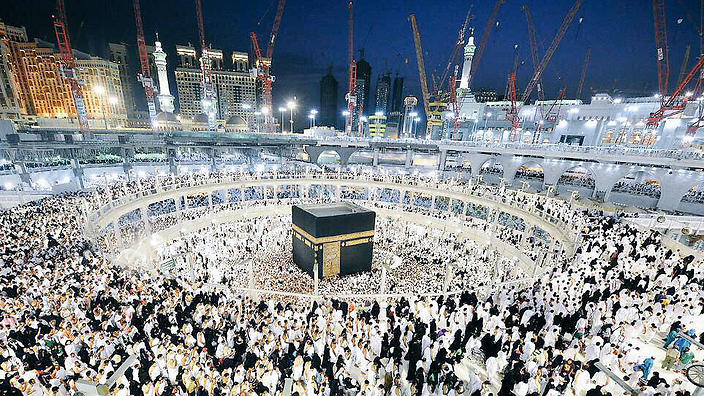Sustained and continuous expansion of the Two Holy Mosques and other holy sites and consummate services provided by the government have played a major role in increasing the number of pilgrims arriving here perform Haj in recent years.
Upgradation and improvement of services and infrastructure including communications, roads, airports, hotels and pilgrim camps have also contributed in attarcting more and more pilgrims.
From 431,270 pilgrims in 1390 Hijri (lunar year) to a record 1,325,372 last year is a long journey of development and progress initiated by successive governments in the Kingdom.
The number of domestic pilgrims in 1393 Hijri totaled 514,790, registering the lowest number from within the Kingdom. The highest number of domestic pilgrims was registered in 1403 Hijri with 1,497,795 pilgrims.
The lowest number of pilgrims from in and outside the Kingdom was in 1391 Hijri when the total reached 1,042,027. The highest number of pilgrims was registered in 1433 Hijri with 3,161,573.
“The Ministry of Culture and Information monitors quantitative and qualitative development to highlight the tremendous efforts made to serve pilgrims,” said the director of the operations room at the ministry, Abdulkhaliq Al-Zahrani.
The Kingdom is implementing huge projects aimed at raising the capacity of the mosques and developing Makkah, Madinah and all other holy sites, the Saudi Press Agency (SPA) said.
“The best witness to the efforts of the Kingdom is the tremendous development in the Jamarat bridge project and the surrounding area, and in Mina and Muzdalifah, and the expansion of the Jamarat complex, which consists of four floors in addition to the ground floor to accommodate nearly 4 million pilgrims,” Al-Zahrani said.
There is also rail transport for pilgrims from Muzdalifah and their tents in Mina to Jamarat bridge, as well as the creation of shaded bridges and well-ventilated tunnels.
An automated system for cleaning the courtyards of the Two Holy Mosques has been developed, he said.
A large number of hospitals and medical clinics has been constructed to serve the pilgrims. The project for fanning water spray has been set up in order to cool the atmosphere for pilgrims in the plains of Arafat.
Rifada and Suqya projects prove the pilgrims with free quality meals and chilled Zamzam water. Besides, several other projects are providing quality services to the pilgrims.
The pilgrims, he said, will witness more and more giant projects in the coming years, God willing. They include the mega train project that links Makkah with Madinah and Jeddah and is linked to King Abdulaziz International Airport.
Meanwhile, the General Command of Air Security has intensified air patrols in the skies over Makkah and Madinah, local media reported.
This implementation is part of the Haj plan’s second phase, said Maj. Gen. Mohammed Bin Eid Al-Harbi, the aviation security commander.
Al-Harbi said that the plan consists of several stages and the second phase will monitor the security situation and traffic, influx of pilgrims, and detect infiltration routes of pilgrims without permits.
He added that the second phase will also monitor human traffic in the central area of the Two Holy Mosques and the roads leading to them.
He added that “the flights are being increased to follow the security situation and to keep a close eye on the pilgrims’ movement during their overnight travel to Makkah.”
[Source: Saudi Gazette]





 WhatsApp us
WhatsApp us 

